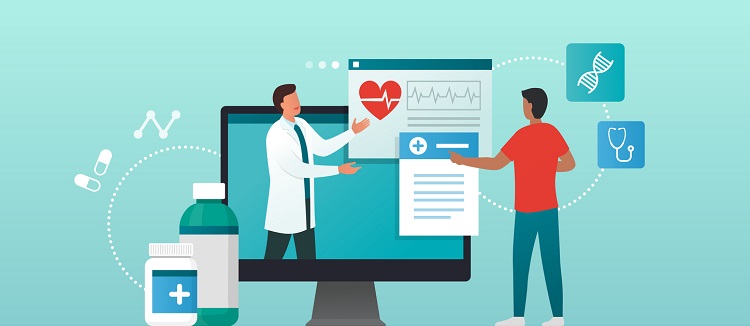The Internet of Things (IoT) enables seamless connectivity and real-time data exchange. When paired with remote patient monitoring (RPM), IoT transforms how biometric data—like blood pressure, heart rate, and glucose levels—is collected and shared. With IoT, this vital data is automatically transmitted from Bluetooth or cellular devices directly to healthcare providers, allowing for timely and effective monitoring. This integration of RPM and IoT is redefining healthcare delivery.
As an example, during the COVID-19 pandemic, Kaiser Permanente of Southern California reported that just 10% of patients enrolled in its RPM program required hospitalization, with a remarkably low mortality rate of 0.2%. By creating secure, instant connections between patients and providers, IoT and RPM enable physicians to quickly address complications, improving outcomes and reducing costs. Together, they are driving the evolution of healthcare into a more efficient, patient-centered system.
This article explores the benefits of IoT in RPM, and how IoT enhances RPM to promote preventive care, minimizes patient effort, securely stores patient data, keeps all parties connected, and increases access to healthcare.
Benefits of RPM and IoT
IoT enhances RPM by transforming the way data is shared. It supports a more convenient and value-based approach to healthcare that can benefit patients and clinicians alike. The positive impact of RPM and IoT has been seen in patient outcomes and healthcare cost reduction. Five key benefits of IoT in remote patient monitoring are included in the following sections.
1) Telehealth, RPM, and IoT Promote Preventive Care
IoT is helping in areas like early detection of breast cancer with breast cancer screenings. RPM and IoT also allows clinicians to better asses a patient between appointments. By closely monitoring patients outside of the clinical setting in everyday life, complications can be detected early. This enables a shift toward preventive treatment.
A major feature of RPM and IoT is that physician platforms can alert clinicians when a patient’s reading exceeds customized thresholds. Catching complications early minimizes the cost of healthcare admissions and reduces emergency room visits. One study of a large-scale RPM program for COVID-19 patients found that RPM patients had a lower 30-day hospital readmission rate (6.2%) than non-RPM patients (14.9%).
2) RPM and IoT Require Minimal Effort by the Patient
Another benefit of IoT in RPM is that it requires minimal effort from the patient. Generally, patients won’t comply with a regimen if it is too complicated or time-consuming. IoT enables remote patient monitoring devices to send patient data to the remote patient monitoring portal automatically. As a result, the process is easier and takes stress off the patient.
The patient does not have to worry about writing down information or sending readings to their clinicians. Additionally, some RPM devices do not require pairing with additional software. Devices that are ready to use right out of the box are especially helpful for caregivers providing help to their elderly or Alzheimer’s patients.
3) Safely and Securely Stores Patient Data
A major benefit of RPM is that IoT devices transmit consistent patient health data, which can be stored. Over time, a detailed patient health history develops. Because of this, clinicians better understand the patient’s condition, enabling better treatment. RPM devices must be FDA-cleared and allow for secure data storage and communication that ensures patient privacy.
4) RPM and IOT Keeps All Parties Connected
RPM IoT devices use Bluetooth, Wi-Fi, or cellular technologies to transmit data in real-time. This makes it easy for patients to engage in their health. Patient engagement plays an essential role in determining health outcomes.
Even the most successful treatment plan will not work if the patient does not follow it. However, with reminders and health apps, RPM offers an opportunity to keep patients involved in managing their health.
5) Increases Access to Healthcare
IoT enables greater access to RPM services. It focuses on improving the efficiency of the healthcare experience for both patients and clinicians. IoT minimizes the need for travel by enabling secure and automatic data transmission. With RPM patients in rural communities can also take their vital sign measurements from home and easily share data with their care providers.
RPM and IoT Add to the Bottom Line
The National Center for Chronic Prevention and Health Promotion Disease Control Prevention (NCCDPHP) estimates that 90% of the nation’s $4.1 trillion in annual healthcare expenditures are for patients with chronic health conditions. The Internet of Things drives remote patient monitoring into action. RPM through IoT offers a reliable, secure, and efficient way to share patient health data and manage chronic conditions. Therefore, RPM healthcare providers have more opportunities to check patient data between visits. They can care for more patients and focus on early intervention to minimize these healthcare costs and improve patient outcomes.
GlobalData expects the market for IoT platforms catering to healthcare providers will grow steadily.A compound annual growth rate (CAGR) of 4.6% is expected between 2020 and 2025. Furthermore, there’s a promising outlook for spending on IoT within the medical devices market, with an estimated CAGR of 6.6% over the same period.
Are your healthcare partners interested in adopting remote patient monitoring to increase patient engagement, create a more efficient workflow, or increase revenue – Tenovi can help you find a better solution. Book a free RPM demo today.


